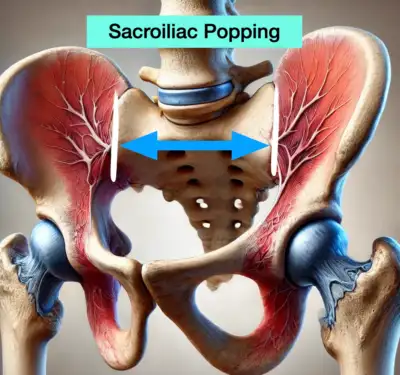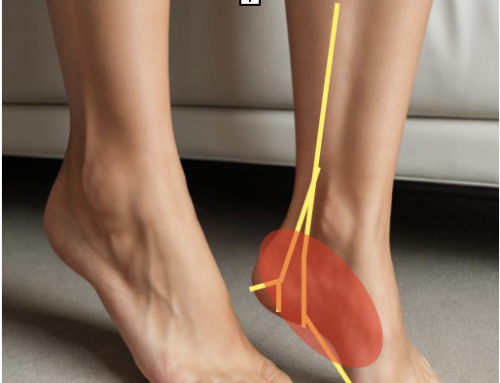Understanding Sacroiliac Joint Dysfunction and It’s Treatment

The sacroiliac joint (SI joint) is a crucial connection linking the spine and pelvis, essential for maintaining stability and mobility. Many individuals experience unusual sensations in this joint complex, which can be concerning. This 2024 up-to-date article delves into the primary causes of these sensations and offers insights into effective treatment options.
What is the Sacroiliac Joint?
Nestled where the sacrum meets the ilium, this joint excels at shock absorption and stability during movement. Though its motion is limited, any discomfort or odd sounds might signal deeper issues needing attention.
Common Causes of Sensations in the SI Joint
Experiencing unusual symptoms in the SI joint can stem from various factors:
- Joint Dysfunction: This may arise from either stiffness (hypo-mobility) or excessive movement (hyper-mobility), leading to instability.
- Trauma or Injury: Sudden impacts, falls, or accidents can disrupt the normal function of the joint, resulting in discomfort and audible sensations.
- Muscle Imbalances: Weakness or tightness in the surrounding muscles can affect the joint’s stability, contributing to unusual feelings in the area.
- Inflammatory Conditions: Conditions such as arthritis can lead to inflammation in the joint, causing pain and audible sounds during movement.
What’s Causing Popping?
- Tight muscles, tendons or ligaments creating a audible noise as they rub against the bones of the pelvis.
- Pregnancy
- Ligamentous laxity
- Sacroiliac dysfunction- occurs when one side or both of the pelvic bones are rotated out of position causing snapping of the tendons or ligaments that are elongated.
Generally audible popping, snapping or clicking within joints may hint to the overall function of the SI joint, but until the noise is associated with pain the noise doesn’t mean there is a significant issue with the sacroiliac joint complex.
Symptoms Associated

Individuals experiencing issues with their sacroiliac joint may encounter a variety of symptoms, including:
- Localized pain in the lower back or buttocks
- Radiating discomfort down the legs
- Difficulty with movements such as bending or twisting
- Unusual sounds during certain activities
Effective Treatment Strategies
Addressing dysfunction in the sacroiliac joint involves a combination of self-care strategies and professional interventions. Here are some effective approaches:
1. Physical Therapy
Working with a physical therapist can help strengthen the muscles surrounding the joint, enhance flexibility, and restore proper movement patterns. Tailored exercises can significantly enhance stability and reduce discomfort.
2. Targeted Exercises and Stretches
Incorporating specific exercises and stretches into your weekly routine can alleviate pain and improve function. Some beneficial exercises include:
- Hip bridges
- Pelvic tilts
- Hamstring stretches
3. Pain Management Techniques
Utilizing over-the-counter pain relievers, applying ice or heat therapy, and using topical analgesics can help manage discomfort associated with joint dysfunction.
4. Lifestyle Modifications
Making adjustments to daily activities, such as avoiding prolonged sitting or heavy lifting, can reduce strain on the sacroiliac joint and promote healing.
5. Medical Interventions
In more severe cases, medical interventions such as corticosteroid injections or surgical options may be unavoidable to address persistent pain or dysfunction.
Conclusion
Understanding the factors caused by the dysfunctional sacroiliac joint and implementing an efficacious treatment blueprint could significantly amplify the quality of daily life for those affected. If you experience ongoing pain or discomfort, consulting a healthcare professional for a full evaluation and personalized treatment plan is crucial.
Key Considerations for Treatment
When addressing sacroiliac joint dysfunction, it’s essential to consider various components that can alter treatment effectiveness. Here are some key highlights to keep in mind:
| Factor | Description | Impact on Treatment |
|---|---|---|
| Severity of Symptoms | How intense the pain and discomfort are. | May dictate the need for more aggressive treatment options. |
| Duration of Symptoms | How long the individual has been experiencing issues. | Chronic conditions may require a more comprehensive approach. |
| Underlying Conditions | Presence of other health issues, such as arthritis. | Can complicate treatment and require tailored strategies. |
| Activity Level | How active the individual is in daily life. | Higher activity levels may necessitate different rehabilitation strategies. |
Pros and Cons of Treatment Options
Understanding the advantages and disadvantages of various treatment options can help individuals make educated decisions. Below is a outline of the pros and cons of common approaches:
| Treatment Option | Pros | Cons |
|---|---|---|
| Physical Therapy | Non-invasive, personalized exercises, improves strength and flexibility. | Requires commitment and time; results may vary. |
| Medications | Quick relief of pain and inflammation; widely available. | Potential side effects; does not address underlying issues. |
| Injections | Targeted pain relief; can provide significant improvement. | Invasive; may require multiple sessions; potential complications. |
| Surgery | Can provide long-term relief; addresses structural issues. | Invasive; recovery time; risks associated with surgery. |
Top Points to Remember
- Consult a healthcare professional for a proper diagnosis and treatment plan.
- Physical therapy is often the first line of treatment and can be highly effective.
- Incorporate regular exercise and stretching to maintain joint health.
- Monitor your symptoms and adjust activities to avoid exacerbating pain.
- Consider lifestyle changes that promote overall wellness, such as maintaining a healthy weight and practicing good posture.
When to Seek Professional Help
While many cases of sacroiliac joint dysfunction can be managed with self-care and conservative treatments, there are times when professional intervention is necessary. Seek medical attention if:
- Pain persists despite home treatment efforts.
- Symptoms worsen or new symptoms develop.
- You experience significant mobility limitations.
- There is a loss of bowel or bladder control.
Conclusion
Understanding sacroiliac joint dysfunction is imperative for the best management and treatment. By recognizing the symptoms, exploring treatment options, and considering individual factors, individuals can take proactive steps toward recovery. Always consult with a healthcare expert to develop a personalized treatment outline that addresses your specific needs.
This blog uses the highest editorial standards utilizing evidence based practices.
Reach out to Dr. Dean (sports doctor) in California by texting (best), calling 323-354-6077, or emailing at drjustindean@gmail.com
References





